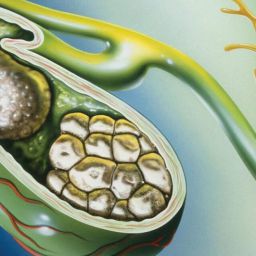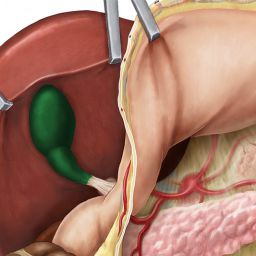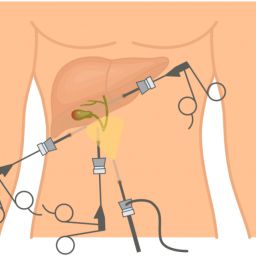
How Gallstones Affect Digestive Health
Gallstones can cause significant disruptions in the digestive system, particularly by interfering with bile flow from the gallbladder into the small intestine. The digestive process relies on bile to break down fats, and without a smooth flow of bile, digestion becomes difficult.
Here are the primary ways in which gallstones can affect digestive health:
1. Obstruction of the Bile Ducts
When a gallstone becomes lodged in one of the bile ducts, it can obstruct the normal flow of bile from the liver to the small intestine. The bile ducts are responsible for transporting bile from the gallbladder into the digestive system. An obstruction of the bile duct can lead to a condition known as biliary colic, which causes severe pain in the upper abdomen.
Biliary colic can result from the gallstone moving and blocking the bile duct temporarily. The pain usually comes in waves and can last anywhere from a few minutes to several hours. This blockage can also affect digestion, especially the digestion of fats, leading to symptoms like nausea, vomiting, and bloating.
2. Inflammation of the Gallbladder (Cholecystitis)
In some cases, the gallbladder can become inflamed due to a gallstone blocking the bile ducts. This condition is called cholecystitis, and it is often associated with severe pain, fever, and digestive issues. Cholecystitis can prevent the gallbladder from releasing bile into the digestive system, making fat digestion particularly difficult. This can result in uncomfortable symptoms such as:
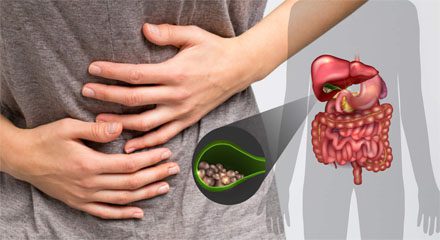
- Nausea and vomiting: A common reaction to the digestive disturbance caused by the gallstones.
- Indigestion: A feeling of fullness or discomfort after eating, especially after consuming fatty foods, which the body struggles to digest properly without the aid of bile.
- Bloating: An accumulation of gas in the digestive tract due to poor digestion of fats.
Cholecystitis can also lead to gallbladder infection if left untreated. If the infection spreads, it may cause further complications, including sepsis, a potentially life-threatening condition.
3. Pancreatitis
In some instances, gallstones can migrate from the gallbladder and block the pancreatic duct, a tube that carries digestive enzymes from the pancreas to the small intestine. This blockage can lead to pancreatitis, a condition characterized by inflammation of the pancreas. The pancreas plays a key role in digestion by producing enzymes that break down carbohydrates, fats, and proteins in the small intestine.
When the pancreatic duct is blocked, the enzymes become trapped in the pancreas, causing inflammation and severe abdominal pain. Pancreatitis can significantly impair digestion, particularly the digestion of fats, proteins, and sugars. This condition often requires hospitalization and may necessitate surgical intervention to remove the gallstone causing the blockage.
4. Malabsorption and Nutritional Deficiencies
One of the primary functions of bile is to help break down fats in the digestive system. When gallstones obstruct the bile ducts or lead to cholecystitis, bile cannot flow freely into the small intestine, making it difficult to digest fatty foods properly. This can lead to malabsorption, where the body is unable to absorb essential nutrients from food, particularly fat-soluble vitamins like A, D, E, and K.
The result is nutritional deficiencies, which can manifest in various ways:
- Fatigue: Due to the body’s inability to absorb adequate nutrients, including essential fatty acids and vitamins.
- Skin problems: Vitamin deficiencies, particularly Vitamin A, can lead to dry skin, rashes, or even hair loss.
- Weak bones: A lack of Vitamin D and calcium can result in weakened bones and an increased risk of fractures.
- Poor immune function: Vitamin E and K deficiencies can impair the immune system, making individuals more susceptible to infections.
5. Gallstone Ileus
A rare but serious complication of gallstones is gallstone ileus, which occurs when a large gallstone erodes through the gallbladder and into the intestine. This can cause a blockage in the bowel, preventing food and waste from passing through the digestive tract. Symptoms of gallstone ileus include:
- Severe abdominal pain
- Nausea and vomiting
- Constipation or inability to pass gas
Gallstone ileus is a medical emergency and requires immediate treatment, often involving surgery to remove the obstructing gallstone.
Risk Factors for Gallstones
Several factors can increase the likelihood of developing gallstones. These include:
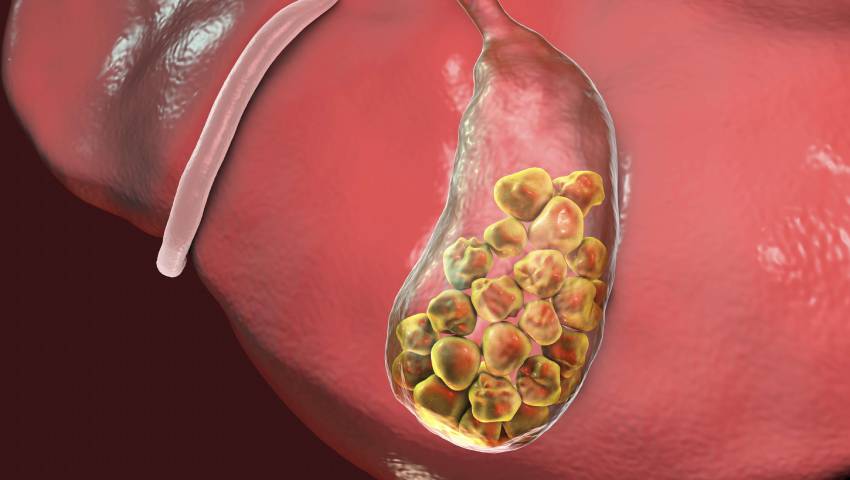
- Obesity: Being overweight increases cholesterol levels in the bile, raising the risk of cholesterol gallstones.
- Age: Gallstones become more common as people age, particularly after the age of 40.
- Gender: Women are more likely to develop gallstones than men due to hormonal factors, such as pregnancy and the use of birth control pills.
- Diet: A diet high in fat and cholesterol can contribute to the formation of gallstones.
- Family history: Having a family member with gallstones increases your risk.
- Diabetes: Individuals with diabetes often have high levels of cholesterol in their bile, which can lead to gallstone formation.
Symptoms of Gallstones
Not everyone with gallstones experiences symptoms, but when symptoms do occur, they can include:
- Abdominal pain: Often described as a sharp pain in the upper right side of the abdomen, which may spread to the back or shoulder.
- Nausea and vomiting
- Bloating and indigestion: Especially after eating fatty foods.
- Fever: If a gallstone causes infection or cholecystitis.
- Jaundice: A yellowing of the skin and eyes, which occurs when a gallstone blocks the bile duct and prevents bile from being excreted properly.
Treatment Options for Gallstones
The treatment for gallstones depends on the severity of the symptoms and whether complications arise. Common treatment options include:
- Dietary Changes: For individuals with mild symptoms, making changes to the diet, such as reducing the intake of fatty foods, can help alleviate discomfort and improve digestion.
- Medications: Certain medications, such as ursodeoxycholic acid, can help dissolve cholesterol gallstones. However, this treatment is generally only effective for smaller stones and takes time.
- Surgical Removal of the Gallbladder (Cholecystectomy): The most common treatment for symptomatic gallstones is surgery to remove the gallbladder. This procedure can be done laparoscopically (minimally invasive) or through open surgery.
- Endoscopic Procedures: If a gallstone is lodged in the bile duct, an endoscopic retrograde cholangiopancreatography (ERCP) procedure may be used to remove the stone.
Gallstones can have a significant impact on digestive health, causing symptoms such as pain, nausea, bloating, and difficulty digesting fats. If left untreated, gallstones can lead to complications such as cholecystitis, pancreatitis, or gallstone ileus. Fortunately, with proper diagnosis and treatment, most individuals can manage their symptoms and prevent serious complications.
Maintaining a healthy weight, eating a balanced diet, and avoiding excessive intake of fatty foods can help reduce the risk of developing gallstones. If you experience symptoms such as abdominal pain or digestive distress, it’s essential to consult with a healthcare provider to determine the underlying cause and explore treatment options.

